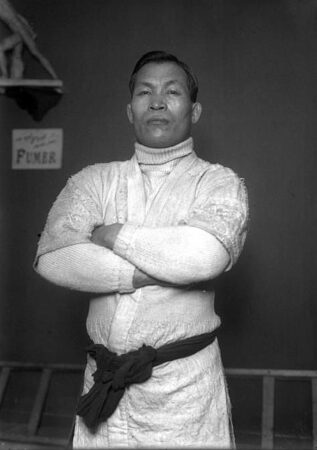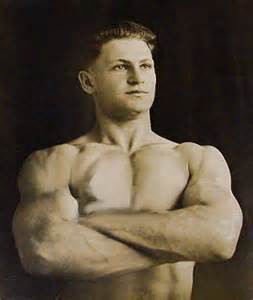מיאקי נגד. סאנטל מעורב מעורב
באוקטובר 20, 1916, Ad Santel, "זונה" ידוע או מתאבק הגשה מיומן, פגש את תרו מיאקה, a Jujitsu black belt, בהיאבקות מעורבת נגד. תחרות ג'וג'יטסו. אחרי בערך 20 seconds, סנטל הבטיח חצי נלסון על מיאקי, הרים אותו מהמזרן והטיח את מיאקי על הרצפה. ההשפעה הפכה את מיאקה לחסרת היגיון. Miyake’s seconds assisted him back to the dressing room as Miyake could not walk under his own power. If you search either man’s biography, you will see this account.
All the facts in this account are true. אולם, the story tellers omitted facts, which would give the reader a different impression.

Photo of Taro Miyake from 1914 (<תוחלת bbox_x = bbox_y "621" = bbox_w "771" = bbox_h = fsize "69", "17" = fweight "11" = "3" אדום = ירוק "255" = "255" כחול = אלפא "255" = ")
Fans paid $2.00 for ringside seats, $1.50 for main floor seats and $1.00 for general admission to see the match at Seattle’s Arena. The contestants agreed to a 2-out-of-3 fall Jujitsu match. Santel studied Jujitsu in addition to catch wrestling but the reporters covering the match did not record the rules for the match nor did they say if Santel wore a judo gi jacket.
Santel and Miyake entered the ring at 8:30 p.m. for the Saturday card. The men grappled evenly until Miyake secured a judo throw at the 29ה minute. Miyake threw Santel for the first fall. The men rested for the normal 10-minute intercession.
To start the second fall, Santel charged Miyake. Santel secured the half-Nelson and slammed Miyake for the second fall. Miyake returned to the dressing room during the intermission, but he could not continuethe match. The referee awarded Santel the third fall and match due to Miyake’s inability to return to the ring.
I discovered over the last 8 years that it is best to search for official sources about matches and incidents. Wrestlers tell exceptional stories. The storyteller relies on factual information but embellishes the facts and omits other information to make a compelling narrative. Writers should trust but verify.
Santel scored an impressive win a legitimate contest with a dangerous opponent. It just was not as one-sided as the storytellers led us to believe.

The powerful and dangerous Ad Santel, who wrestled in the prearranged era but was a legitimate catch wrestler (<תוחלת bbox_x = bbox_y "621" = bbox_w "771" = bbox_h = fsize "69", "17" = fweight "11" = "3" אדום = ירוק "255" = "255" כחול = אלפא "255" = ")
Santel slammed Miyake but did not discourage him from professional wrestling. Early martial arts instructors instructed students but often could not pay their bills just with teaching. Early judo instructors like Miyake, Yukio Tani and Mitsuyo Maeda grappled with boxers and wrestlers in challenge matches. The instructors earned enough money to carry them for six months or more.
Taro Miyake charted his own path when he started wrestling professionally full-time. Miyake taught part-time while accepting regular wrestling bookings. Miyake adapted to working matches instead of fighting in legitimate contests. Miyake did not win a world title, but he developed into a respected professional in the worked era.
You can leave a comment or ask a question about this or any post on my דף פייסבוק.
Sources: The Seattle Star, אוקטובר 18, 1917 edition, עמ '. 10 ואוקטובר 22, 1917 edition, עמ '. 8

